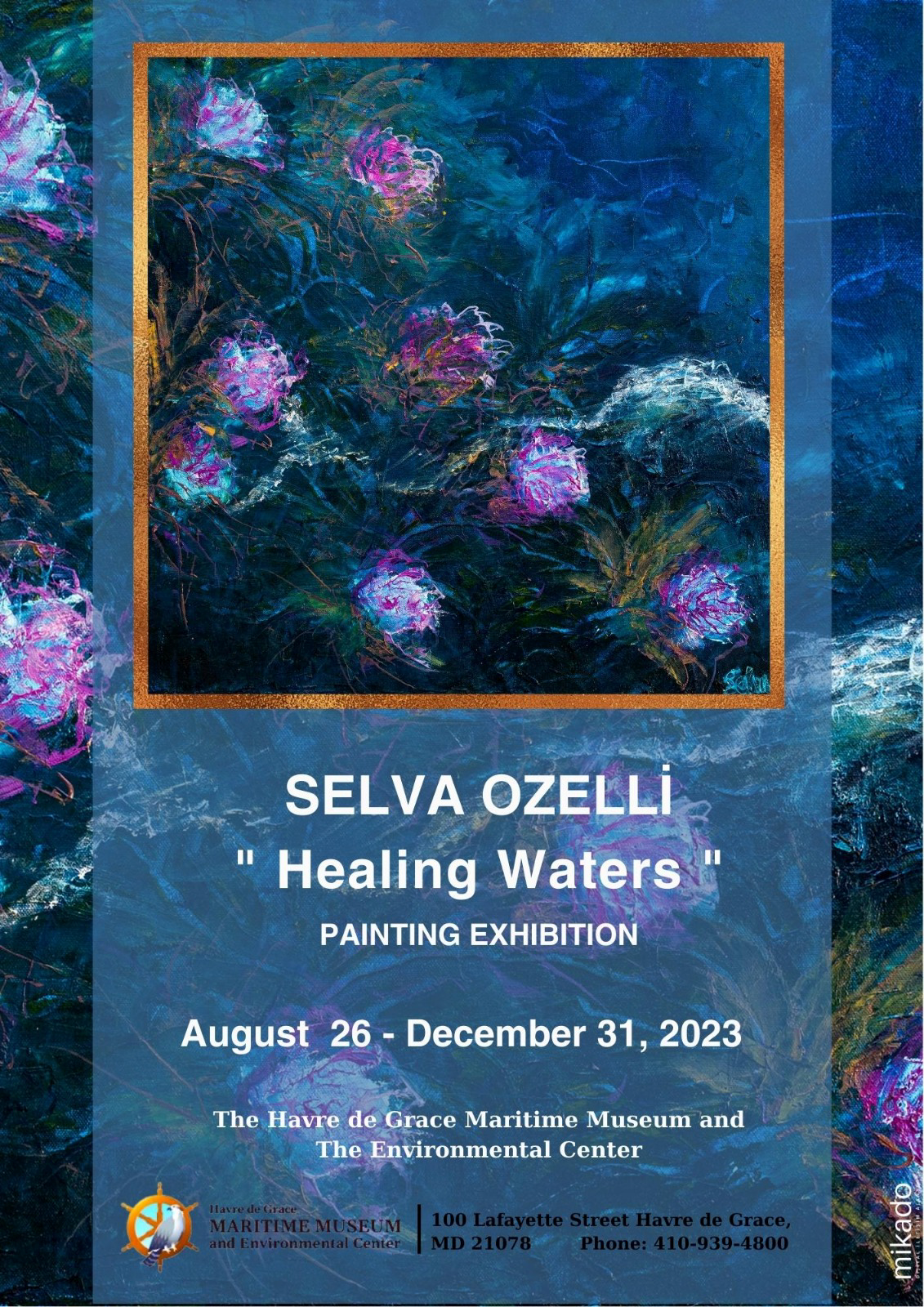2024-11-29 22:11:24
Roughly 35 per cent of all wetlands globally disappeared between 1970 and 2015, and the rate of loss has been accelerating since the year 2000.

Havre de Grace Maritime Museum and Environmental Center, is located in Havre de Grace, Harford County, Maryland. It is situated at the mouth of the Susquehanna River and the head of Chesapeake Bay -- the largest estuary in the United States – which outlets into the Atlantic Ocean.
The Chesapeake Bay is a National Treasure. Its 64,000-square-mile watershed encompasses one of the most economically significant regions of the United States. It is protected by the landmark Chesapeake Bay Watershed Agreement (adopted in 2014, amended in 2020) that calls for, among other things, conservation and restoration of the treasured water, sea and landscapes with participation form six states - New York, Pennsylvania, West Virginia, Maryland, Delaware, Virginia, and the District of Columbia.
In April, the Environmental Protection Agency (EPA) agreed to a lawsuit filed in 2020 by Maryland, Virginia, Delaware, and the District of Columbia that stated Pennsylvania must reduce its disproportionate impact in polluting the Chesapeake Bay. This law suit was settled in July requiring EPA to enforce provisions of the Clean Water Act by demanding Pennsylvania to develop a plan to fully meet pollution reduction goals for the Bay.
Over the past 200 years, wetlands have been drained to make way for farmland or infrastructure development. Roughly 35 per cent of all wetlands globally disappeared between 1970 and 2015, and the rate of loss has been accelerating since the year 2000. Depending on the amount of climate-related sea level rise, some 20 to 90 per cent of current coastal wetlands could be gone by the end of the century, according to the United Nations Environment Programme (UNEP).

Wetlands estuaries and river deltas have suffered more biodiversity loss than other land and marine ecosystems and act as an early warning – a canary in the coalmine -- that all is not well, from rising sea levels to invasive species, to climate exchange, excess water pollution from fertilizing lawns, gardens, farms, exhaust from automobiles, wastewater, septic systems, and stormwater runoff.
This is true for Chesapeake Bay too. As the only animal unique to Maryland the Darter fish – which was discovered in 1912 in Swan Creek near Havre de Grace by two biologists -- has been declared an endangered species by the U.S. Fish and Wildlife Service.
Some good news is that in addition to the landmark Chesapeake Bay Watershed Agreement, at a global level at the UN Biodiversity Conference in December last year, countries agreed to a landmark deal to protect a third of the planet’s lands, coastal areas and inland waters by 2030.
With my art show “Healing Waters” at the Havre de Grace Maritime Museum and Environmental Center, opening on August 26th until the end of the year. I hope to draw attention to the nearly extinct Darter Fish and to the fact that action to restore wetlands and oceans is gathering momentum not only in Chesapeake Bay, but also around the world too.
The digital Healing Waters art show will be on exhibit at Climate Week New York, Florida Climate Week, Global Climate Change Week as part of my seven art show exhibitions by three Museums.
Healing Waters at Havre de Grace Maritime Museum and Environmental Center Havre de Grace, MD:
Orcas & Reefs at Whaling Museum Cold Spring Harbor, NY:
Love Someday & Reef Dwellers series at CUHK Jockey Club Museum of Climate Change, Hong Kong, China:
Healing Waters will be on exhibition at United Nations Climate Change Conference (COP28) along with my Orcas & Reefs art show and a new series titled “Power of the Future” for the Global Resilience Partnership platform.
Healing Waters will also be on exhibit at World Wetlands Day through the end of 2024: https://www.worldwetlandsday.org/dashboard.
I thank Museum Director Jennifer Sim and Board Members Leslie Kaufman and Bruce Russell for their support.
Most Viewed

Elephants, Giant Harmless Animals
2024-11-29 22:11:23

Commercial whaling and climate change are inhibiting evolutionary change in Arctic whales
2024-11-29 22:11:24

World Environment Day: 5th June
2024-11-29 22:11:24

Talking About Earth Day at Havre de Grace Maritime Museum
2024-11-29 22:11:24

Tackling the Impact of Climate Change for All at COP28
2024-11-29 22:11:24
Comment

Why we need a UN Treaty on plastic pollution The Ellen MacArthur Foundation is a UK charity working on business, learning, insights & analysis, and communications to accelerate the transition towards the circular economy.

Air Pollution for Kids Air is all around us and we need it to survive.

Why We Need to Stop Plastic Pollution? Our oceans are being filled and killed by throwaway plastics.

Climate Change, Ecological Crisis and Sustainability We are all agents for change in climate action.

Climate Racism Climate Racism: Social Inequalities in the Age of Climate Change
Martin Nolan
2024-11-30
Un article complètement utilisable pour tous les gens. Souvent la tradition ou la religion nous permet de trouver une solution pour les déchets plastiques.
Émilie Poluin
2024-11-30
J'ai lu l'interview de Mme Agnoux et C'est très intéressant. En somme, ces articles nous permettent d'apprendre beaucoup de choses.
Henri
2024-11-30
Tous ces commentaires devraient nous aider à mieux combattre ce problème !
Nico!!
2024-11-30
Cet article m'a beaucoup aidé à en savoir plus sur cette pollution plastique.
Moi sans toi
2024-11-30
Cette prise de conscience devrait se faire davantage. Votre site peut très bien gérer cela et continuer!
Marie
2024-11-30
Plastic pollution will continue as long as the arrangements and lifestyle do not change.
yang
2024-11-30
This amount of waste is very dangerous and you have to think of a solution to solve it.